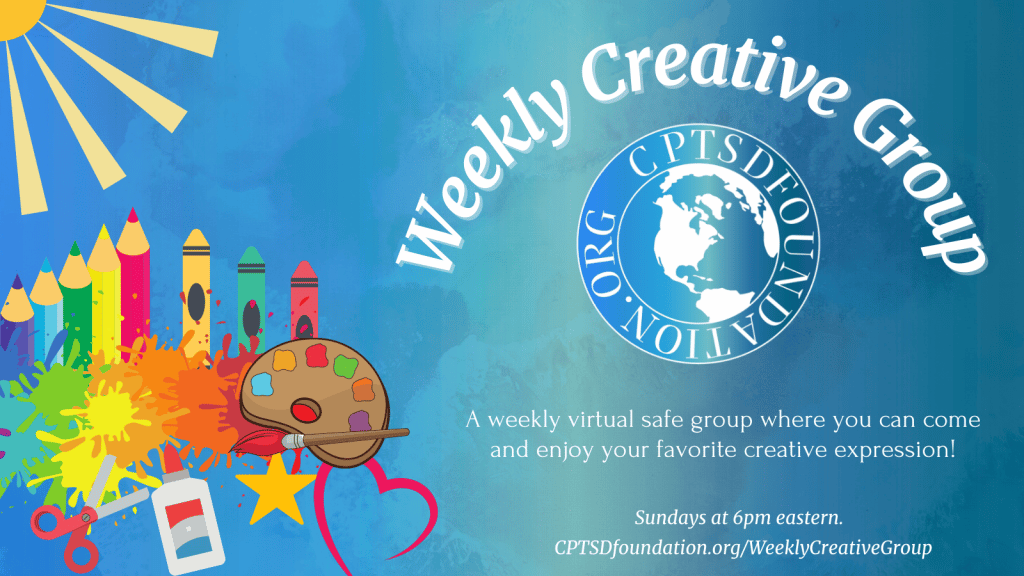In July 2020, eleven months since we first went no-contact, my father wrote me his own obituary.
Entitled “Who I Am on the Way,” my father described in the third person his early profound religious experiences (“[a]s if he’d written John 21:25” himself), how for him, “making love was a continuous, collaborative art form,” and even included a suspiciously short list of his flaws, such as his ability to “speak truth to power” and “yell without raising [his] voice.” Most disconcerting to me still is his choice of words when he wrote that he “shared Thoreau’s aim to ‘suck the marrow out of life.’” One thing is certain. My father always sucked the life out of me.
At the time, his latest attempt to hoover me back into a relationship with him was traumatic in the extreme. Reading it now, “Who I Am on the Way” is, more than anything, educational. Painstakingly self-aggrandizing (I can just imagine him hunched over the blue light of the laptop he claimed to hate, typing away with two fingers at three in the morning), my father’s obituary is an admission, an unwitting invitation to bear witness to the insecurities that corrode his soul. It is also – in all its entitlement, grandiosity, and lack of insight or boundaries – my original case study of narcissism and narcissistic abuse.
Contemporary research defines narcissism as a chronic set of personality traits characterized by significant impairments to interpersonal functioning, primarily resulting from insecure attachments in early childhood. Dr. Ramani Durvasula defines narcissistic personality disorder (or NPD) as a learned behaviour pattern that causes harm to others.[1] Unlike most personality disorders, in which the person most negatively impacted is the person with the disorder, narcissism has the most profoundly negative impact on those affected by the narcissist, as the traits they exhibit are, by definition, interpersonally antagonistic and damaging. Experts characterize narcissistic traits as including, but not limited to, entitlement, grandiosity, lack of empathy, validation seeking, superficiality, interpersonal antagonism, insecurity, hypersensitivity, contempt, arrogance, and poor emotional regulation (especially rage). [2] These traits act as shields against narcissistic injury (i.e., a narcissist’s hypersensitivity to signs and indications of feeling undervalued or unappreciated) and internalized shame. While they may succeed in the short term, these traits lead to considerable difficulties in making and sustaining healthy relationships as an adult.[3]
These traits further make pathological narcissism extremely difficult, if not impossible, to treat. Mental health clinicians agree that, so far, no empirical studies have successfully identified a reliably effective psychotherapeutic or psychopharmacological treatment for narcissism.[4] For one thing, narcissists’ bullying behaviour extends to their therapists, considering the unlikely event that they are willing to seek help in the first place. Giancarlo Dimaggio observes that:
“[Narcissistic] [c]lients may involve therapists in different maladaptive relational patterns, pushing them to feel angry, devalued, helpless and inadequate and to disengage from the therapy process…Very often patients barely accept they are in treatment to deal with their own personality issues and only ask for symptom relief. This is one source of impotence and frustration in therapists, who eventually ask themselves: ‘Is this person really suffering? And if he does, is he willing to helped?’”[5]
Bottom line, narcissists are so interpersonally difficult and so unwilling to accept responsibility for their actions that they alienate even trained professionals. It is my belief, therefore, that we should focus on prevention, not treatment, of narcissism, the most effective method being psychoeducation.
Psychoeducation refers to psychological or therapeutic interventions presented in an educational format. These interventions can take the form of ‘passive materials’ such as pamphlets, informational websites, social media posts, and email listservs, or more ‘active’ methods like group exercises, workshops, therapy sessions, and training.[6] Psychoeducation has been proven in many contexts to be effective in both treating and preventing mental disorders[7] and, in the case of narcissistic abuse, “may be the most important part of the treatment.”[8] As Durvasula notes, “[m]any clients just don’t know how narcissistic patterns work – they often fall unto attribution biases and blame themselves.”[9] Given that narcissistic abuse also occurs in cultural contexts where abuse, particularly of marginalized people, is often normalized and romanticized, psychoeducation in narcissism does the powerful work of de-normalizing these behaviours and uncoupling them from cultural images of power and success. As the Hans Christian Anderson story famously said, the emperor has no clothes.
At the dawn of Donald Trump’s second U.S. presidency, we are entering a dangerous era of narcissists in power. Given that, I argue that we must include another component in regular discourses on narcissism: gender. Despite growing awareness of narcissism, issues of gender and misogyny continually go unaddressed and unchecked. In a recent profile of mass shooters on The New Yorker Radio Hour,[10] which cited drug use, access to weapons, mental health issues, and fame-seeking among some of the main factors in an individual’s propensity to commit a mass shooting, profilers failed to account for gender as the single biggest factor (99% of mass shooters in the U.S. are male).[11] Traditional masculinity, as this example illustrates, is so interchangeable with violence that we often fail to see it as the threat it undoubtedly is. As Clare Bielby notes, “because masculinity and violence so often mutually constitute each other, masculinity has tended to be ignored in discussions of so-called political violence and perpetration, functioning…as the unmarked gender.”[12] Yet violence is gendered, and until we as a global community challenge gendered concepts that devalue male emotion and vulnerability and overvalue power, our world will continue to be a violent place.
My father was a narcissist, but he was also a man. A man who had learned – from his father and his father’s father and anyone else who subscribed to the patriarchy – that vulnerability equaled weakness, dominance equaled strength, and that, as a husband and father, he was entitled to control the women in his life. And yet, he would have been so much happier, so much more loved, if he hadn’t. My mother, sister, and I, feeling safe, would have loved him.
In Lundy Bancroft’s Why Does He Do That, he says, “[t]he better we understand abusers, the more we can create homes and relationships that are havens of love and safety.”[13] Psychoeducation in narcissism is a crucial step toward that goal, and I welcome the difficult walk ahead.
[1] Durvasula, Ph.D. “Don’t You Know Who I Am?”: How to Stay Sane in an Era of Narcissism, Entitlement, and Incivility. (Post Hill Press, 2021), 5.
[2] Ibid.
[3] Flett, Gordon L., et al. “The Anti-Mattering Scale versus the General Mattering Scale in Pathological Narcissism: How an Excessive Need to Matter Informs the Narcissism and Mattering Constructs.” (Journal of Psychoeducational Assessment, vol. 41, no. 6, 27 Oct. 2022), 621.
[4] Caligor, Eve, et al. “Narcissistic Personality Disorder: Diagnostic and clinical challenges.” American Journal of Psychiatry, vol. 172, no. 5, 1 May 2015.
[5] Dimaggio, Giancarlo. “Treatment principles for pathological narcissism and narcissistic personality disorder.” (Journal of Psychotherapy Integration, vol. 32, no. 4, Dec. 2022) 409.
[6] Donker, Tara, et al. “Psychoeducation for depression, anxiety and psychological distress: A meta-analysis.” (BMC Medicine, vol. 7, no. 1, Dec. 2009), 2; Burman, Erica. “Fanon, Foucault, Feminisms: Psychoeducation, Theoretical Psychology, and Political Change.” (Theory & Psychology, vol. 26, no. 6, 1 Aug. 2016), 707.
[7] Ibid.
[8] Durvasula, Ramani. “Navigating Narcissism: Giving Our Clients a Compass.” (Psychology Today, 5 Dec. 2019), Paragraph 4.
[9] Ibid.
[10] Remnick, David, et al. “What Makes a Mass Shooter?” The New Yorker Radio Hour, 27 May 2022.
[11] Martin, Michel, and Emma Bowman. “Why Nearly All Mass Shooters Are Men.” All Things Considered, NPR, 27 May 2021, Line 6.
[12] Bielby, Clare, and Jeffrey Stevenson Murer. Perpetrating Selves: Doing Violence, Performing Identity. (Palgrave Macmillan, 2019), 4.
[13] Bancroft, Lundy. Why Does He Do That?: Inside the Minds of Angry and Controlling Men. (Penguin Random House, 2008), 36.
Photo by Scott Warman on Unsplash
Guest Post Disclaimer: Any and all information shared in this guest blog post is intended for educational and informational purposes only. Nothing in this blog post, nor any content on CPTSDfoundation.org, is a supplement for or supersedes the relationship and direction of your medical or mental health providers. Thoughts, ideas, or opinions expressed by the writer of this guest blog post do not necessarily reflect those of CPTSD Foundation. For more information, see our Privacy Policy and Full Disclaimer.





Hello,
I really enjoyed reading your article; it helped me touch into my experiences in a straightforward and direct connectedness with – in my case – parental narcissistic abuse by both my mother and my father. My sister also suffered at the hands of those two difficult, difficult parent-children that my sister and I had separately to parent and partner. Thanks for an accessible and well-conceived view.
I was sad to see that the penultimate paragraph in your article pins narcissism and violence into – seemingly, in the absence of any mention of women – the realm of a ‘masculinity’ and/or ‘patriarchy’ issue.
Humans are violent, not men. Violence manifests in nature in many ways, not all of which are so obviously physically delivered. One of these is physical violence, to which both men and women are prone to use. Both sexes take advantage of their relative strengths to exert their aggression, their violence. With physical prowess, men generally have an advantage physically; with linguistic and relational capability, women generally have an advantage emotionally and psychologically. Other factors (especially individual differences) obviously skew both of these ‘advantages’ this way and t’other in a standard distribution curve.
I respect your own, your mother’s and your sister’s experience of this one man, your father. But I don’t accept or condone the use of that experience to conflate narcissism and violence (although clearly narcissism of any flavour is a violence) and then attach them solely to masculinity. That excludes men from being seen, from being free to claim their own witness.
I suggest we both know just how difficult that is for anyone whose had to endure a narcissist in any relationship. Please don’t exclude men in your bringing into the light so eloquently this sort of education. Having worked in psychoeducation in UK mental health services, I humbly agree on its effectiveness and importance. Let’s make it equally welcoming to both women and men.
HI Matt,
I understand not wanting to exclude men from the conversation – on the contrary, I would love it if more men were engaged! I also don’t wish to negate the fact that women can also be perpetrators of violence.
However, there is unfortunately no way around the fact that patriarchy and toxic masculinity are massive factors in violence generally and in cases of narcissistic abuse. If men and women committed violence at equal rates, or were narcissistic at equal rates, we would be having a different conversation. They don’t, and they aren’t. Men are the perpetrators of the vast majority (from 80-99%) of all cases of violent assault, rape, sexual assault, homicide, and mass shootings, and the breakdown of narcissism by gender is around 80%/20% respectively. Yet, “Speaking of male violence is called ‘blaming men’; it is ‘political,’ often in the dismissive sense. More subtly, bureaucratic, political and academic discourses often maintain what appears to be a willful blindness to the gendered nature of violence” (Feminist Frameworks: Building Theory on Violence against Women).
I believe men will have to show some humility and get on board with interrogating their own privilege, as well as their pain, and work together with people of all genders to end abuse in every sense. As someone who has many lovely men in my life, I know as well as anyone that no, it’s not “all men.” But it’s far too many. And, through psycho-education, we have the power to change that, for everyone’s benefit.
Please feel free to get in touch with me! I know these are uncomfortable conversations that deserve time and care.
Best,
Sophia
In addition, I highly recommend the following documentary about male inmates who lead and participate in workshops on personally healing from and combating toxic masculinity: The Feminist in Cell Block Y, https://www.youtube.com/watch?v=JYxTzsabkH8.